Description
Day 01 – Friday Lima
Arrival at the airport in Lima where you will be welcomed and transferred to the hotel.
Lima was founded in 1535 by the Spanish conqueror Francisco Pizarro as “The city of the kings” and became the capital and most important city of the Spanish Viceroyalty. Today it is still Peru’s most important city as it gives home to about 9 million people, almost 30% of the national population.
The historical city centre comes with splendid colonial style architecture, ample squares as the Plaza de Armas (or Plaza Mayor) and grand churches which yielded it the declaration as UNESCO World Cultural Heritage.
In its modern quarters such as Miraflores and San Isidro you can find present day architecture, rich entertainment possibilities and a great number of first class hotels and restaurants. Peruvian cuisine is excellent and gets more and more famous in the world and Peruvians are extremely proud of their typical dishes.
Moderate: Hotel La Hacienda Miraflores or similar
Superior: Hotel Casa Andina Premium Miraflores or similar
Day 02 – Saturday Lima (B)
Today you will explore the city on a sightseeing tour through Lima. The Plaza de Armas with the beautiful buildings of the government Palace, the town hall, the Palace of the archbishop and the cathedral are still the most important places in town. After that you will visit the beautiful San Francisco monastery which displays the largest collection of religious art in America. The highlight of this convent is the visit of the underground vaults known as “catacumbas” or catacombs.
Proceed through the modern districts of San Isidro and Miraflores and to the Coastline enjoying the view over the beaches of Lima and the Pacific Ocean.
Afterwards enjoy a guided visit of one of the Lima’s most noted museums, the Larco Museum which houses the world’s largest private collection of Peruvian pre-Columbian Art. Mr. Rafael Larco Hoyle founded the museum on July 28, 1926, in the Chiclin sugar estate in Trujillo, naming it as his father as an expression of filial homage. In 1958 he moved the collection to Lima, installing the Museum in a Colonial house in the district of Pueblo Libre, where it currently functions. This locale was adapted to the characteristics style of the 18th century Colonial houses from Trujillo. The approximate 45,000 objects of the collection have been exhibited to the public in the Permanent Hall, Jewellery Vault and the Classified Storage Area ever since.
The Halls of the Larco Museum are organized by subjects. The Metals, Ceramics, the Stones, the Culture, the Great Jewellery Vault and Textile Halls emphasize the technological aspects by Pre-Columbian cultures. Finally the World’s unique Erotic Hall gives us a glimpse of the fascinating sexual life of ancient Peruvians.
Afternoon is free at leisure or take an optional tour to Visit of Waterpark and dinner.
Day 03 – Sunday Lima – Cusco – Yucay (B/L)
Transfer Airport Cusco – hotel Yucay including visit of the Chinchero community and the Chinchero market en route
Transfer to the airport for the flight to Cusco. Upon arrival you will start the tour with a visit to Chinchero community located 28 km away from Cusco. Here are the remains of what was the royal hacienda of Tupac Inca Yupanqui, as well as beautiful colonial temples built on Inca’s foundations. However, its main attraction is its Sunday market originally dedicated to the people of the valley to barter their products. This colourful and lively market still fascinates people with its variety of handicrafts and textiles made in true pre-Columbian style.
Then you will be transferred to “El Mirador de Racchi” where you will have a splendid view of the Sacred Valley. Afterwards you will enjoy a typical lunch, followed by the transfer to your hotel.
Moderate: Hotel Casa Andina Premium Valle Sagrado or similar
Superior: Hotel Aranwa Sacred Valley Hotel & Wellness or similar
Day 04 – Monday Yucay (B)
Morning is free for you to take an optional tour to visit Moray and Maras or Trekking to the terraces of Yucay.
In the afternoon, a visit to Ollantaytambo, a typical Inca community, is included. Towering above the town of Ollantaytambo we will find the Inca fortress of Ollantaytambo. Steep stone terraces rising from the edge of town lead up to the fortress ruins at the top of the hill. A stone stairway leads up through the terrace walls, allowing visitors to step out on them. One of the best-preserved areas lies north of the Hanan Huacaypata square: an area of 15 blocks of houses built on top of carved stone walls.
Day 05 – Tuesday Yucay – Machu Pichu – Cusco (B)
Transfer by bus to the train station of Ollantaytambo where the tour starts by train that goes through the fertile plain of the Urubamba valley and on to Aguas Calientes. From there, small busses drive up the steep mountain to the ruin town.
Machu Picchu called the Lost City of the Incas, this cultural heritage of mankind is a beautifully located impressive stone city constructed with a technique incredible for its era and even for present times. Stone upon stone, fitted together perfectly without any cement, with impressive delicacy, exquisite detail and discrimination worthy of the world’s greatest palaces. There are many theories about Machu Picchu, but one thing is for sure – it is one of the most impressive sites in the world.
Enjoy a guided visit of around 2 hours of the ruins and return by bus and train to Ollantaytambo station. Transfer to your hotel in Cusco.
Cusco – South America’s archaeological capital and oldest continuously inhabited city is now one of Peru’ s most important and most frequented tourist attractions. Nevertheless, it is still remaining its vivid legacy as the hub of the Inca Empire: Quechua-speaking Inca descendants can still be found multitudinously in the centuries-old stone-walled city streets.
Cusco also boasts magnificent repositories of colonial art – fine examples can be found in the Cathedral and Museum of Archaeology.
Moderate: Hotel Hotel Xima or similar
Superior: Hotel Aranwa Cusco Boutique or similar
Day 06 – Wednesday Cusco (B)[
Today you will start for a half day city tour. It will be shown the exact centre of the Incan Empire, the Plaza de Armas. There one can find the cathedral built on the ruins of the ancient Inca Palace. The cathedral borders on other churches on both sides. Next stop will be the old town with its magnificent renovated colonial buildings; some of them are being used as hotels.
Proceed to Sacsayhuaman, a ruin site located approx. 3km above Cusco. Sacsayhuaman also offers a fabulous view over the city. Afterwards visit the surrounding ruins.
The afternoon is free at leisure.
[Day 07 – Thursday Cusco – Puno (B/L)
A full day bus tour from Cusco to Puno leads through the Peruvian highland along snow-covered peaks of the Andes, small villages and reaches its highest point in La Raya at 4.300m above sea level. On route you will visit the town of Andahuaylillas, the ruins of Racchi and the small town of Pucara. Lunch in a typical restaurant en route is included.
Upon arrival in Puno transfer to your hotel.
Puno – The beauty and charm of Puno town is made up by its habitants’ kind personality and by its mixture of typical Andean architecture that is to be found all way down from the sides of the hills until the bank of the Titicaca Lake. Its archaeological, cultural and architectural variety and richness owes Puno to the fact that it once has been inhabited by three different civilizations on the banks of the Titicaca Lake: Aymara, Quechua and Spanish. This multicultural origin has created a mestizo race that is also found in their artistic and cultural expression and especially in an incomparable folklore which is second to none and has made Puno the “Folklore Capital of Peru”. But the main attraction of Puno is the Titicaca Lake, a must for any visitor. The Sacred Lake of the Incas is one of the most enigmatic places in the world. It is the highest navigable lake and combines beautiful sights, culture and history.
Moderate: Hotel Jose Antonio Puno or similar
Superior: Hotel Libertador Lago Titicaca or similar
Day 08 – Friday Puno – Lima (B/L/D)
In the morning you will be picked up from your hotel and transferred to Puno’s dock where you will depart towards the Uros Islands on Titicaca Lake. The Uros are 40 small floating islands made of packed totora (reed), located within the Titicaca National Reserve. Here the inhabitants of the lake, the Uros, live just as their ancestors did, maintaining their customs and idiosyncrasies.
After visiting the Uros Islands we will continue by boat to Taquile Island. There are no roads or electricity in Taquile and the locals have maintained their traditions and culture and many still wear traditional dresses. The Taquileños are known for their high-quality handicrafts, especially for the knitting, which is exclusively performed by males. In the main square there is a cooperative shop, selling woollen goods and hand-woven items, as well as a small church.
A typical lunch at Taquile Island is included.
Transfer from the hotel to the airport of Juliaca. A box dinner will be provided during the transfer.
Flight to Lima and upon arrival transfer to the hotel.
Moderate: Hotel La Hacienda Miraflores or similar
Superior: Hotel Casa Andina Premium Miraflores or similar
Day 09 – Saturday Lima – Iguassu (B) [
Transfer from the hotel to the airport of Lima. Flight to Iguassu and transfer to the hotel.
Iguassu – one of the biggest wonders of nature in South America: located amidst a sub-tropical forest in the triangle of Argentina, Paraguay and Brazil, a gigantic row of waterfalls goes down into the river Iguassu.
Moderate: Hotel Recanto Cataratas
Superior: Hotel Belmond Das Cataratas or similar
Day 10 – Sunday Iguassu (B)
You will leave your hotel on the Brazilian side by motor coach and cross the Iguassu National Park towards the Brazilian Falls. You walk along the paths following the cascades and then along the catwalk which leads you very close to the bottom of the Devil’s Throat. You will enjoy magnificent views. Afterwards you take an elevator to go up back to the road, and there you will board the motor coach which will take you to the Argentinean side of the falls.
You will make a short stop at the Visitor’s Centre and proceed from there along the Inferior Circuit, the down-river falls, to the Superior Circuit, the up-river cascades. The Ecological Jungle Train leads you to the most impressive observation point of the falls – The Devil´s Throat. After visit transfer to the hotel on the Brazilian side of the falls.
Day 11 – Monday Iguassu – Buenos Aires(B/D)
Transfer from the hotel to the airport for the flight to Buenos Aires. Arrival in Buenos Aires and transfer to the hotel.
Buenos Aires – is not only the capital of Argentina; it is also one of the 10 most important metropolises in the world and the centre of the political, economic and intellectual life of the country. This cosmopolitan city – with great European cultural influence – displays a refined taste in its cooking, in its ”boutiques” and in the elegance of its inhabitants.
Almost 12 million people live there and can enjoy the plentiful night life visiting ”tango” bars, cabarets, discotheques, restaurants or eternally open bars. During the day, a wide variety of attractions is offered: museums, art galleries, tasteful shops, fascinating antiques, large green areas, parks, wide tree lined boulevards, clubs and sporting events. The Italian-Spanish descent of the inhabitants has formed this modern metropolis. Feel the flair, above all in the Italian old quarter La Boca and in the wide streets with cafes from the turn of the century. At the Plaza de Mayo, in the political centre of town, is the starting point of this tour through this exciting capital. The widest street of the world, the very famous opera house and also the shopping street Florida make Buenos Aires unforgettable.
Afterwards you will be taken to the tango house La Ventana, because visiting a Tango Show is a MUST when you are in Buenos Aires! La Ventana is one of the most authentic tango houses and is located in the San Telmo neighborhood, the heart of the tango scene in Buenos Aires.
The Tango tradition started at the end of the last century, developing from a mixture of various rhythms, which were originally danced in the poorer quarters. In the beginning Tango was only danced by men, accompanied by flutes, violins and guitars. The flutes were later replaced by the “bandoneón” (a type of accordion), which gave the tango its distinctive flavor.
During the excursion you can opt between a tango lesson with specialized teachers or a wine tasting session of different Argentinean wines.
Afterwards you will enjoy dinner (which includes three courses and non-alcoholic beverages as well as half a bottle of wine or two glasses of beer per person) and a tango show.
After the tango show return back to the hotel. Arrival at the hotel around midnight.
Moderate: Hotel Loi Suites Esmeralda or similar
Superior: Hotel Grand Brizo Buenos Aires or similar
Day 12 – Tuesday Buenos Aires (B)
During the city tour you will see the Plaza de Mayo, with the Casa Rosada (the pink house), seat of the government, the Cabildo (town hall) and the Metropolitan Cathedral, home of the Archbishop of Buenos Aires. The tour goes then onto the district San Telmo. Until 1888 this part of the city was a river port, today San Telmo is one of the most modern and desired places to live in Buenos Aires. The worker district La Boca is famous for its colourful tin-houses and its history as living district of Italian seamen and dock workers in the 19th century. The Barrio Norte, also called Recoleta, is the quarter of the rich of Buenos Aires. On the cemetery of Recoleta one will find the grave of Eva Duarte who became famous as Evita Perón. Continue along the widest avenue in the world, the Avenida 9 de Julio, and continue to the Plaza Lavalle with the Federal Court of Justice and the Teatro Colón.
Return to the hotel.
Day 13 – Wednesday Buenos Aires – Rio de Janeiro (B)
Transfer from the hotel to the airport for the flight to Rio de Janeiro. Arrival in Rio and transfer to the hotel.
Rio de Janeiro founded in 1556, the city of St. Sebastian of Rio de Janeiro became the capital of the Colony of Brazil in 1776. In 1808 the Portuguese royal family fled Napoleon and settled in Rio. This brought a surge of progress and the city became the main cultural, political and economic centre of the Portuguese empire. In 1889, when the republic was proclaimed, Rio was confirmed as the country’s capital, which it remained until 1960, when the construction of the new capital, Brasilia, was founded. Rio is situated in a 15-mile-strip of land, wedged between mountains and sea. There are some thirty miles separating downtown Flamengo, from far-flung Recreio, bordered on one side by the blue sea, on the other by verdant hills. Between them lies a colourful state of mind called CARIOCA, with almost 8 million locals who samba their way through life, relaxed and high-spirited. That is just the way it should be in Rio, surrounded by natural beauty on all sides, with Christ the Redeemer perched on top of Corcovado blessing the city and Sugar Loaf, one of the most famous postcards of our country.
Moderate: Hotel Windsor Plaza Copacabana or similar
Superior: Hotel Windsor Excelsior Copacabana or similar
Day 14 – Thursday Rio de Janeiro (B)
Leaving the hotel and proceeding as far as Cosme Velho Station to board a cog-train(*) for the ride through Tijuca Forest up Corcovado Mountain at 748m (2.454 ft) high. The train ride takes 20 minutes and is a wonderful opportunity for a closer look at the forest’s lush tropical vegetation and to enjoy scenic landscapes of the beaches and city. Disembarking at the top of Corcovado and then proceeding up the steps that lead to the top lookout where the towering statue of Christ the Redeemer stands. After appreciating the breathtaking view unfolding below, passengers will descend by train. The tour proceeds passing by Rio’s world-famous beaches as far as Urca District to board a cable car for a two-staged ascent up Sugar Loaf Mountain at 390m (1.280 ft) high. Then coming down and proceeding along Guanabara Bay and Flamengo Park as far as downtown.
Visit downtown area, passing by the financial and business centre and by other attractions such as the Candelaria Church, Saint Sebastian Cathedral, Lapa Arches, Municipal Theatre, National Library, Fine Arts Museum, and by the Sambadrome, site of Rio’s famous Carnival parade.
Tonight, enjoy an optional: Rio by night – Show in the evening
Day 15 – Friday Rio de Janeiro (B)
Transfer to the airport for your international flight back home.
Moderate
- Single supplement: $850
- Flights supplement on request
Superior
- Single supplement: $1289
- Flights supplement on request
GROUP DEPARTURE CALENDAR 2019 – 2020
4, 18
1, 8
15, 29
26
24
7, 28
5
6, 20
11
15

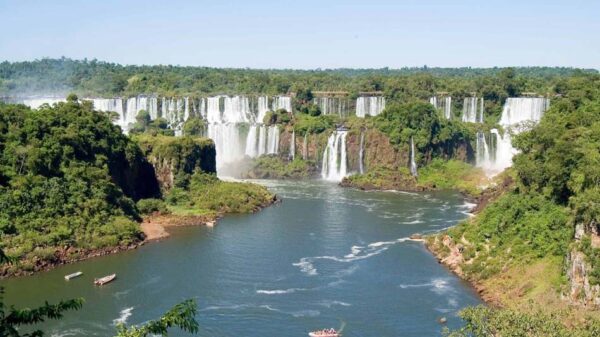

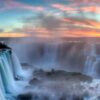
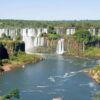
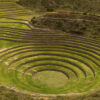
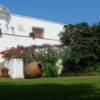
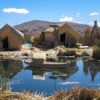



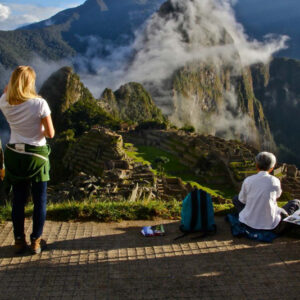



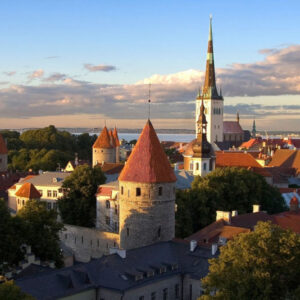
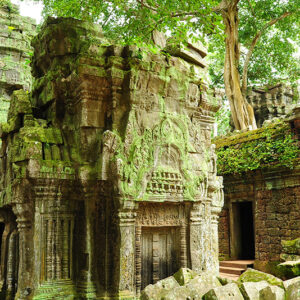
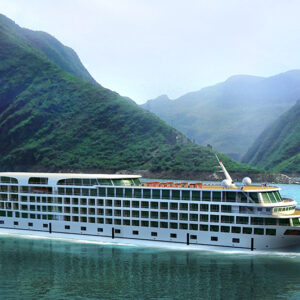
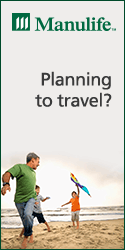
Reviews
There are no reviews yet.